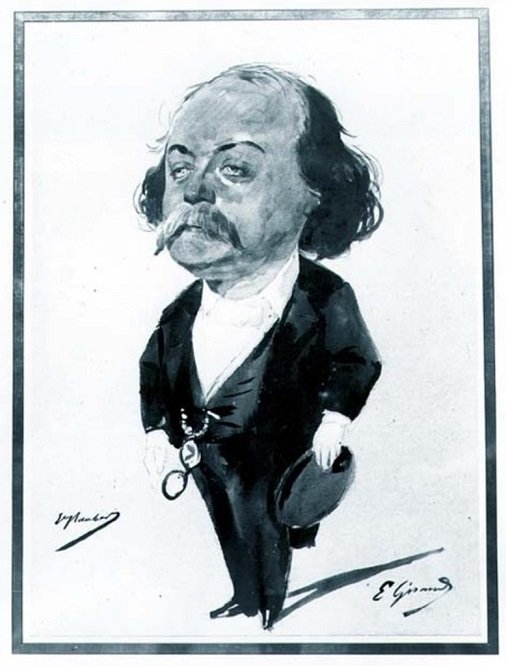Life and creativity of Gustav Flaubert / part 3/
Before he was locked up in solitude, Flaubert took a series of trips. First he goes to Italy with his beloved sister Caroline, shortly before her tragic death. In 1847, Flaubert and his friend Maxime Du Cahn, with whom he joined his studies at the Faculty of Law, wandered along the Loire and the coast of Bretania. After his death, in 1885, his travel book, created jointly with Maxim during his trip "Through the fields and the rocky shores" (Par les champs et par les grèves), will appear. In this travel book, Flaubert recalls the visit to the Châteaubri family estate, Combor.
From November 1849 to April 1851, Flaubert took a second trip with his friend Du Chan on the Mediterranean. The decision to take this journey took after his first attempt to write a more voluminous work, "The Temptation of Saint Anthony", which was begun in May 1848 and read before Du Cane in the autumn of 1849. The sentence of the two friends is too strict "You have to throw it into the fire and never talk about it". The next month, Flaubert joins with Maxim Deu Khan on a ship to travel around Malta, Alexandria, Cairo, Philla, Thebes, Luxor, Beirut, Jerusalem, Rhodes, Constantinople, Athens, Rome and Venice. The two friends returned to France in June 1851. Flaubert was an extremely inquisitive traveler. He staggered to see, to touch, to smell, so that his handwriting relied on what he saw, the sensuously lived. He kept in his memory the women, the scents, the wet winds of the sea.
When a reader is familiar with his travel book, Voyage en Orient, he gets into the big, unlikely paradox: this man who was so often obsessed with boredom loved the life with a fleshly and turbulent love, from the sand of the desert to the silk skin of Egyptian courtesan Rushchuk-Hanum, from the splendor of the sunset over the Nile River to the sharp smell of lemons in the Jafa graveyard, which she delivers with immediate lyricism in his admirable correspondence (in letters to his mother, to his niece, to lv his beloved Louise Cole, to the poet Théophile Gautier, to the Gonkur brothers, to Saint-Boeuf, to Georges Sand, to Renan, etc.). From 1851, when he began writing his novel Madame Bovary, except for his journey to Carthage in 1858 - to get closer to Africa in order to write Salamboff, Flaubert did not he left the estate for the rest of his life. During these years, he devoted himself to his works, which for him are tiresome travels in the imagination among the meanders of his stylistically flawless phrases. The story of "Madame Bovari" is said to have been told by his friends, disturbed by Flaubert's frantic romanticism in his novel "The Temptation of St. Anthony": an unsuccessfully married young woman fades from boredom in the deep province and tries to he fights as he can, with the pain to live by finding his lovers and spending reckless money without having any income to repay his many credits. In fact, the story turns out to be of little importance: Flaubert already knows that the literature is neither beautiful nor ugly, but the approach and style of recreation is far more important.

You got a 10.72% upvote from @postpromoter courtesy of @godflesh!
Want to promote your posts too? Check out the Steem Bot Tracker website for more info. If you would like to support the development of @postpromoter and the bot tracker please vote for @yabapmatt for witness!
nice story, Flaubert is an interesting person :D
True :)